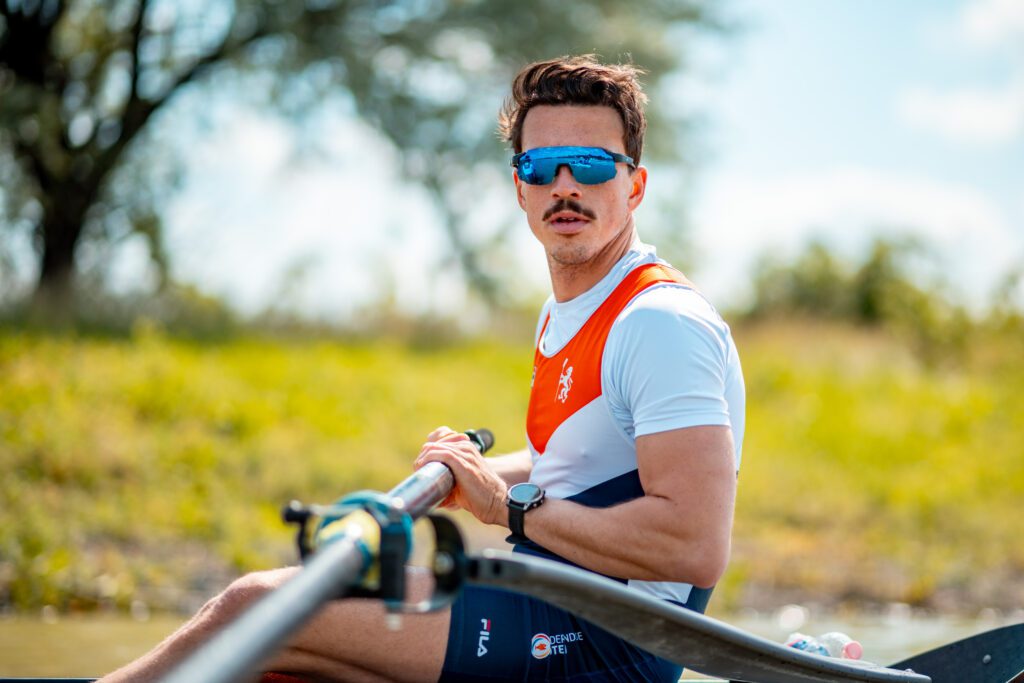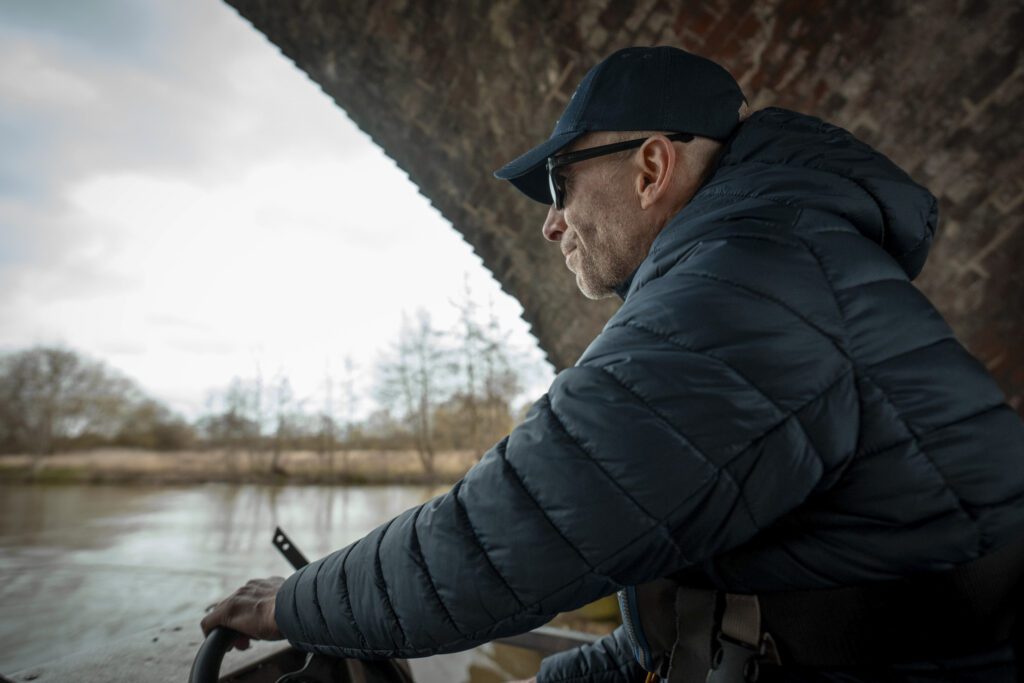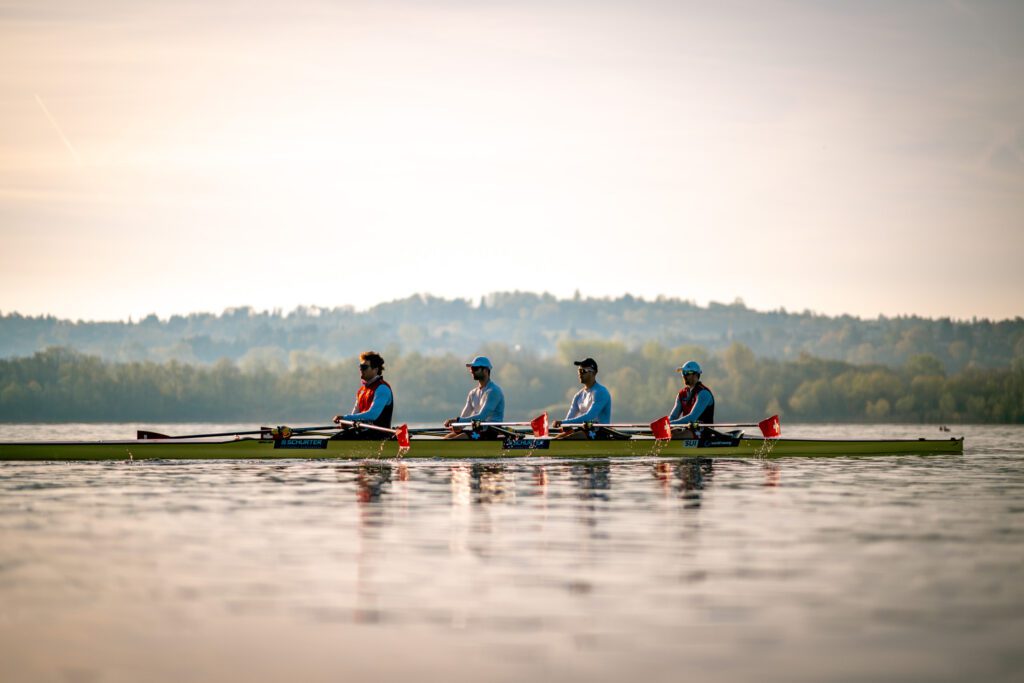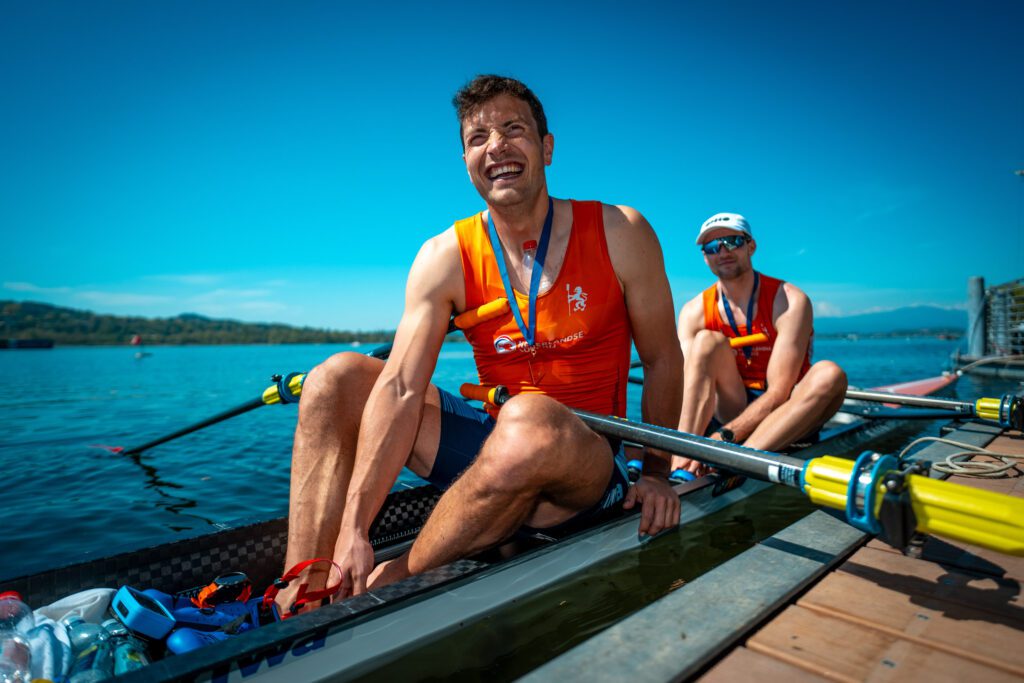Recent tales of football coaches with camouflage outfits and binoculars spying on their upcoming adversaries’ preparations have received much media attention. In the rowing world, catching a glimpse of other crews is often a little more straightforward, and rarely requires wire cutters. While watching (and even timing) the odd session on a shared river will give you an idea of how well and fast your opposition is moving, understanding and learning from their training programme is rarely as public.
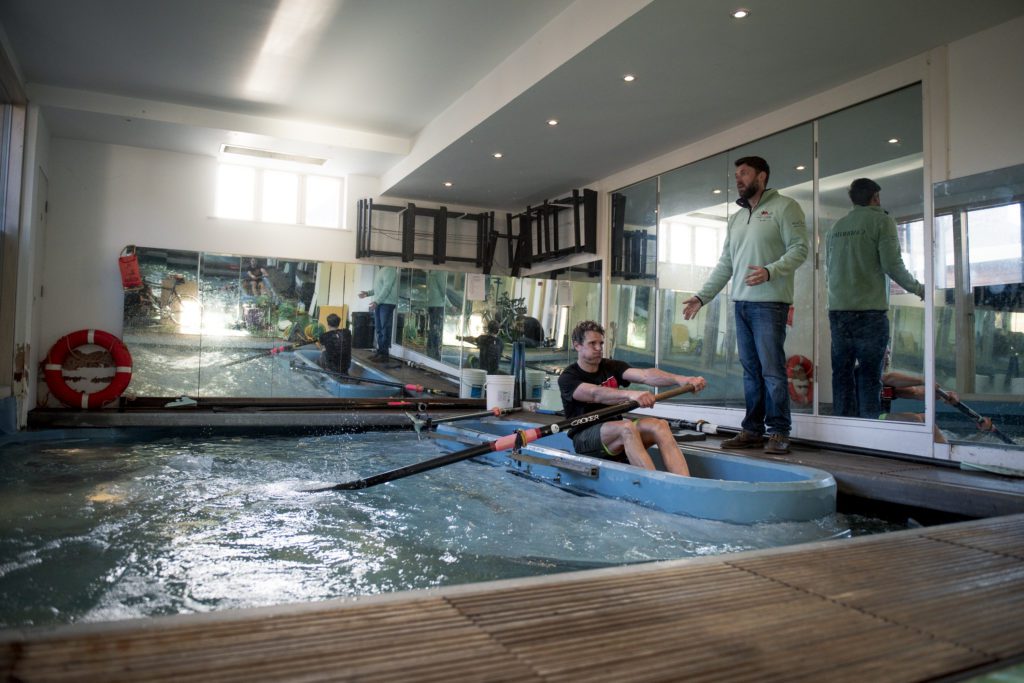
Photo James Cracknell receives coaching from CUBC Head Coach Nick Baker while preparing for the 2019 Oxford Cambridge Boat Race.
Credit Benedict Tufnell
The same is true of international squads, whose training methods are shrouded in secrecy as rival nations hope to gain a competitive edge by doing things better or differently from each other. While each nation will have their traditional training approaches, there are rules of thumb that seem to exist with little evidence to support them – the Italian penchant for intensity and New Zealand’s fondness of long side-by-side efforts to name a couple.
More transient rumours circulate the boat park at major regattas. “The Dutch bowman just told me they have been rowing 300km per week,” or “I heard the Argentinians do a 2km ergo every month,” are typical of the fabrications one might hear when rowers mingle at such events.
More reliable information regarding what actually happens does, however, exist. When permitted, academic researchers have attempted to quantify the work of elite rowers so they can better understand the applied world and figure out why it works – or occasionally doesn’t. Summarising and discussing what has been peer-reviewed then published can provide useful insights into the evolution of training practices and offer some useful advice that is applicable to all levels of competition.
This article will focus mainly on endurance training, its volume and distribution. Some of it is old, but still relevant, and (annoyingly) it rarely uses a consistent or standard method for reporting mileage or intensity. Professor Stephen Seiler, something of an authority in this field, has provided a simple three zone model. The below table helps categorise and compare training from different groups or individuals, using markers that most will be familiar with.
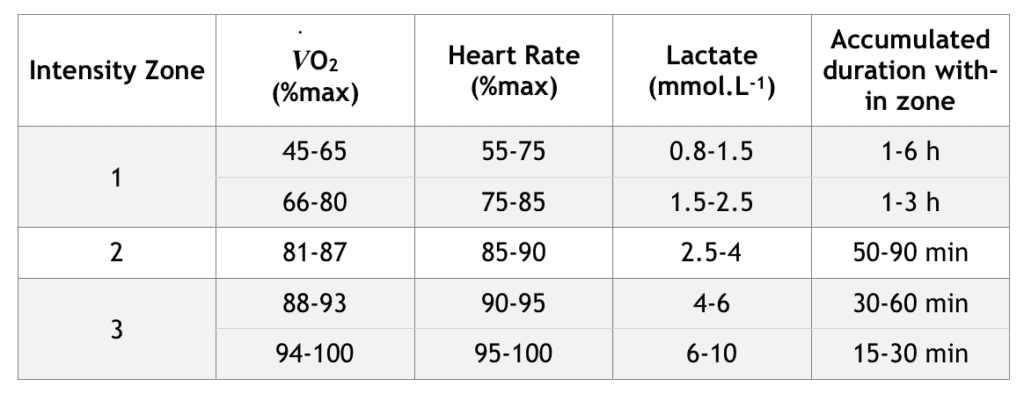
Photo Table adjusted from Seiler et al (2009)
Let’s start with training volume, and the adage that ‘mileage makes champions’. As you would expect, the literature tends to agree – with several papers associating distance rowed with success. Research from Juergen Steinacker, chair of the FISA Sports Medicine Commission and author of some classic rowing physiology studies, suggests that some eastern European teams completed over six hours of on-water rowing per day during the 1970s. Data from the German Junior National Team explains how they trained for 150 minutes per day in 1989 increasing to 190 minutes per day by 1995. As one of the most successful coaches in Olympic rowing history once said to me (in a German accent) “Mark, if there was a way of doing less and getting more, we would be trying it”.
These studies date back up to 40 years, and while interesting, we know that increased professionalism alongside advances in nutrition and sports medicine will have meant these numbers have increased. Fiskerstrand & Seiler (2004) reported a 30% increase in training volume over a 30-year period in Norwegian rowers, and Steinacker observed back in 1995 that by then, the German Junior team were training as much as the seniors 5 years previously. Early investigations tracking the relationship of fitness markers with training volumes suggest that there is an upper limit (more isn’t always better), with endurance performance levelling off when training reaches 5000-6000km per season.
Some real-life examples provide some actual numbers to support the high-volume approach. A case study of Jean-Christophe Rolland by Jean-Rene Lacour and colleagues in 2009 reported an average of 9.2 sessions per week that included 6.7 rowing sessions, 0.9 running or cross-country skiing sessions and 1.6 resistance endurance-strength sessions. Of the endurance sessions that the now President of FISA conducted, 91% of the accumulated time was spent rowing, of which 85% was on the water. This combined for a total of 119km per week (6192km for the season). In the 35 weeks before his gold medal-winning performance in 2000, the number of rowing sessions was increased to 9.8 per week covering 142km per week.
Aason (2008) reported Olaf Tufte completed 1110 hours of endurance training on his way to M1x glory at the same Olympics. Finally, a longitudinal look at the Croatian M4x up to their World Championship winning performance of 2011, suggested they completed 124km per week consisting of 11.1 sessions on average – 7.2 rowing, 2.4 weight training and 1.5 land-based cross-training.
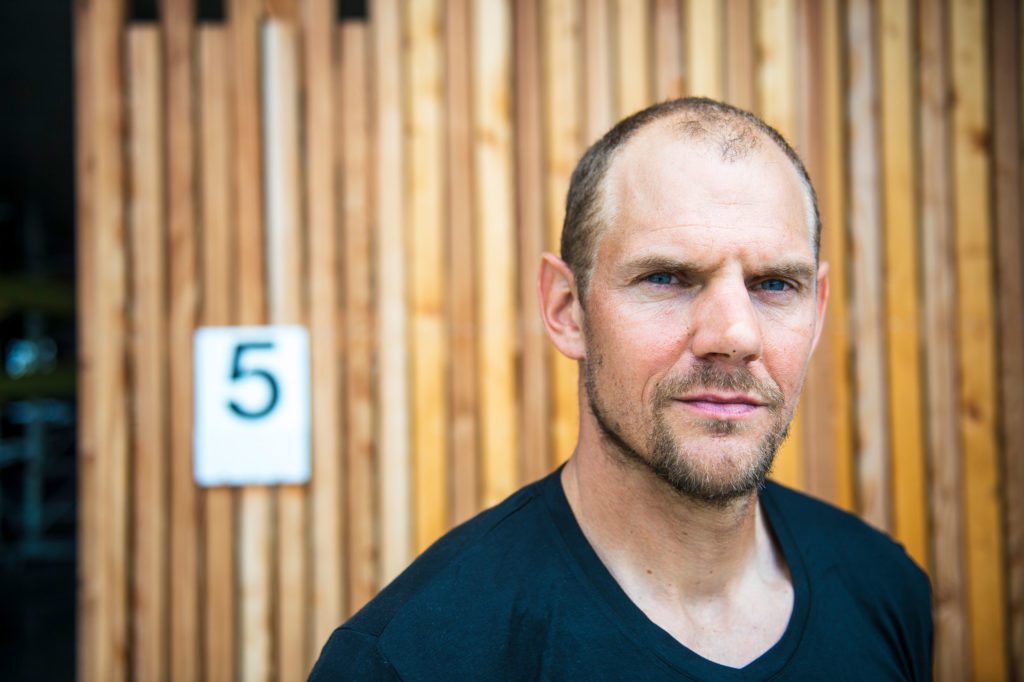
Photo Olaf Tufte, Norwegian Olympic champion in the M1x (2004 and 2008).
Credit Benedict Tufnell
However, while being an important contributing factor, quantity of strokes must be considered alongside quality. The way training is distributed across the various cycles within an Olympiad has been the subject of intense discussion within the scientific community. In most cases, the desire to complete high mileages has led to the evolution of a ‘polarised’ model of training whereby most of the endurance training is conducted at low intensity, with smaller amounts at higher intensities – generally following an 80:20 percent distribution ratio. Seiler has written some definitive articles in this field that include examples from rowing, among other endurance sports.
According to Neykov & Zhelyazkov (2011), Bulgarian single sculler Rumyana Neykova trained for 276 days, completed 566 training sessions (including weight training etc) rowing 5510km in the season of her 2008 Olympic Gold Medal. Of this, 67.7% was completed in zone 1. In a study examining Heart Rate Variability in 9 New Zealand athletes (including 2 gold and 2 bronze medallists) during the 26 weeks preceding the 2012 Olympics, the average weekly training hours across all rowers was 17hrs 46 minutes (±4hrs 23min). Of this time, 77.3% was spent in zone 1, 16.9% in zone 2, and 5.8% in zone 3.
Guellich et al (2009), focusing on the consistently successful German Junior team like Steinacker before him, describe a similar distribution of training. 71% of all work was low intensity – zone 1. The remainder was conducted in zone 2(21%) and zone 3 (8%). Of this endurance training, 56% was spent rowing. This composition changed as the season progressed, with the zone 2 intensity being sacrificed for more race-pace work in the build up to the racing season – comprised of more rowing rather than cross-training.
A novel component of the Guellich research was a retrospective analysis of the differences in training intensity distribution between athletes who went on to achieve senior national and international success following the initial monitoring. Those who demonstrated a more distinct ability to polarise their specific rowing endurance training were more successful in subsequent years. The author speculated that this was due to effective “intensity management”.
So we are getting a consistent picture of how much training some elite rowers have done, and how they have distributed it. There is a clear pattern, and it follows a similar pattern to other endurance athletes such as cyclists and runners.
Many of these studies make a distinction between rowing and cross-training, providing insight into the alternative modalities used by elite rowers to accomplish their high training volumes. Cycling has always been popular, open weight rowers will often gravitate towards another non-weight bearing sport. Cross-country skiing is another option for those who have the opportunity to learn its technical nuances. Running is often reserved for lightweights, while many rowers come from a swimming background so can benefit from pool-based mileage. Such modalities generally allow for zone 1 duration exercise beyond that which is possible in a boat or on an ergo – especially for less experienced rowers who find intensity management difficult, particularly on the ergometer.
It is a difficult concept to land with some elite athletes – the idea that training lighter can make you fitter
Dr Mark Homer
So why has this polarised model of preparation evolved? What is the supporting evidence behind its continued use in the face of often fleetingly popular alternatives? High volume-low intensity training is a consistently effective approach. It targets aerobic endurance, the largest contributing factor to rowing performance and if managed correctly, is low risk. It also promises continued gain. During my time supporting elite rowers who performed over multiple cycles, I consistently saw improvements in markers of endurance performance throughout careers. The same could not be said for other contributors to performance such as maximal strength or sprint performance, which often stabilised after several years in a programme.
The 80% in an 80:20 model of training focuses on adaptations in the periphery – the muscle and its blood supply. Low intensity training will spark the production of more capillaries and increased mitochondria – the cells energy producing factories. The more intense 20% endurance work will have a more central target, leading to increased pumping capacity of the heart via an increased stroke volume.
It is a difficult concept to land with some elite athletes – the idea that training lighter can make you fitter. But, as the Gullich research suggests, avoiding the ‘black hole’ of middle intensity training leads to more sustained improvement and performance. Training too hard during easy sessions will likely lead to an inability to push hard when required, creating a large ‘no-man’s-land’ of training that will not provide the optimal stimulus for adaptation, and lead to increased fatigue and under-recovery.
The locations in which nations train, and the choices that those with the available funds make is an additional factor that can impact on the way they train. The size of lake Karapiro allows Rowing New Zealand to row continuously for over 10km, which provides benefits for physical and technical development. Many nations without such a facility on their doorstep will visit locations such as Avisaqcua in Portugal to replicate this environment. Maintaining zone 1 intensity for longer periods of a training session will make a small but possibly significant difference.

Photo Altitude training has proved popular with certain nations.
The use of altitude has also proved popular with certain nations, including the British and South Africans, who employ a live high-train high model of rowing and/or cross training on more than one occasion per season. A reduction in available oxygen stimulates the body to produce red blood cells to transport more of what is available to the working muscles. While the most reported method of using altitude is live-high and train-low so that athletes can push harder when exercising, this can prove logistically challenging. Remaining high for training requires extra care to be taken when prescribing and monitoring load but guarantees maximal exposure to the thinner air. Recent research has also suggested that there is a ‘muscle memory’ effect with altitude training whereby those with previous experience can adjust to future visits quicker to further improve adaptation.
Finally, how do we know what we are reading that the elites are doing is optimal? Could there be a better way or are coaches playing safe and sticking to what they know has worked in the past? Some research has compared different methods (generally using sub-elite athletes). Ingham et al (2008) found high volume, low intensity to be more effective than a threshold-based programme when attempting to improve 2km ergometer performance. This, among other evidence suggests that the elites are understandably on to something. Respected track coach Steve Magness, on Twitter, once said that “coaches figure out what works in training and then scientists come and figure out why it works”. This statement seems to apply to training methodology and some of sports science’s more radical ideas.
This article first appeared in

